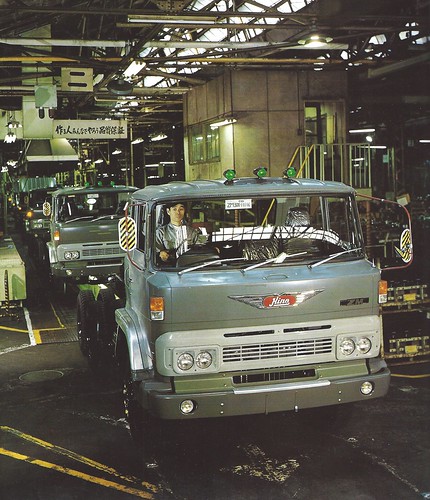China’s Choice for Hong Kong’s Chief Executive Reveals Its Own Insecurity – The Diplomat – I thought that John Lee was likely to be Carrie Lam‘s successor when he was appointed her deputy last June. As others have observed, John Lee looked most likely to be the person in charge during vast parts of Ms Lam’s administration. While others said that CY Leung would want to run again (he probably does as his ambition knows no bounds). I didn’t rate CY’s chances, given how close he was to the Hong Kong business community. The only unknown had how many terms Carrie Lam might sit before John Lee took over. Now we know, despite Ms Lam wanting to spend time with her family since 2019, it wasn’t until Omicron infections increasing in the city that she was definitely a one term chief executive. John Lee’s appointment is a message to the city’s oligarchs as much as it is to the general populace of Hong Kong. Security isn’t balanced with commerce, John Lee will be focusing on a single dimension everything else is noise. John Lee is more likely to have strong connections with the 14K rather than CK Hutchison. There is a widespread concern expressed that the mainland government (with John Lee as its instrument) will take Hong Kong’s oligarchs assets away from them.
China
Chinese state media uses H-1B skilled worker visa for its journalists — Quartz – this looks like it would be relatively straight forward to deal with from a US immigration point of view
China Is Challenging NATO Over Russia’s Ukraine War: Jens Stoltenberg – The NATO chief said the attendance of Asia Pacific partners was important “because the crisis has global ramifications,” not least due to the role of China in giving tacit support for Moscow’s invasion. – this is some of China’s worst scenarios playing out
The Empire of the Golden Triangle | Palladium magazine
The Chinese companies trying to buy strategic islands | Financial Times – It demonstrates the complicated way that Chinese companies sometimes act in sync with the government and its geopolitical ambitions. – everything China is political in nature
Energy
Electric vehicle targets ‘impossible’ without changes to lithium pipeline | Financial Times – actually the article is misleading. It is impossible to meet vehicle targets with batteries, but the truth is that it always had been. Hopefully this will bring more of a focus on hydrogen infrastructure, hydrogen powered vehicles and hydrogen fuel cells
Hong Kong
Jacky Cheung and Nicholas Tse Star in ‘War Customised’ – Variety – After the squashing of the pro-democracy protests that flared up and turned violent in the second half of 2019, a Beijing-imposed National Security Law has changed many aspects of Hong Kong society, ranging from education to elections and entertainment. This has caused cinemas to withdraw certain films from release, the passing of a film censorship law that specifically includes security concerns, and the self-imposed exile of some filmmakers and talent. – interesting footer that I suspect will feature on many future Variety coverage of Hong Kong movies
The Resignation of Britain’s Judges Is the Final Blow to Hong Kong – The Atlantic – The exodus of Hong Kongers and foreign city residents has reached such a level that even the city’s chief executive, who announced this week that she will not seek a second term, admits that Hong Kong is experiencing a brain drain. Her replacement will almost certainly be a former police officer who has been saddled with U.S. sanctions and who helped trigger the 2019 protests. His elevation would cement that, above all else, the authorities in Beijing view the issue of security as paramount, even at the cost of business interests, rapidly decreasing civil liberties, and professional accountability. If Hong Kong is to be thought of as a bridge linking East and West, Steve Tsang, the director of the China Institute at London’s School of Oriental and African Studies, said the infrastructure still exists, but the obstacles erected by Beijing have now rendered it a tough passage. “A bridge can be there, and people can use it and cross and mix and interact and benefit each other,” he told me. “Or a bridge can be there with barricades being put up by one side, and with people on one side not being allowed to use the bridge … I think that is what we are looking at in Hong Kong.”
King of Kowloon: The Life and Art of Tsang Tsou-choi — Google Arts & Culture
Ideas
The Franciscan monk helping the Vatican take on — and tame — AI | Financial Times – “Algorithms make us quantifiable. The idea that if we transform human beings into data, they can be processed or discarded, that is something that really touches the sensibility of the Pope,” – interesting that there is less concern about the effects of automation
How Putin aged into a classic oil state autocrat | Financial Times – On a visit to New York in 2003, Vladimir Putin pitched himself to investors as an economic reformer willing to engage western capitalists, telling us that Russia was more than just another petrostate and shared the values of a “normal European nation”. Those words ring hollow now that Putin is invading Ukraine, but he seemed sincere at the time. Having taken over a nation battered in the late 1990s by financial crisis and default, he was pushing privatisation and deregulation. – what’s really interesting is the degree of change over time. Everything seems to hinge on Putin’s great power internal narrative
Korea
Seoul’s lure as financial centre impeded by heavy-handed regulation, says mayor | Financial Times – interesting that Korea wants to target companies leaving Hong Kong
Materials
The great medicines migration: how China controls key drug supplies | Financial Times
Retailing
JD.com/Richard Liu: another tech boss bites the dust | Financial Times – Antitrust regulators picked market leader Alibaba as their main target, allowing JD to increase market share. JD fully controls its supply chain, warehouses and transport. That means it offers a slicker experience for customers than peers dependent on third-party services. That also makes it a big employer, another plus in Beijing’s eyes. Unfortunately, an asset-heavy business model becomes a weakness when prices and wages are rising. In the fourth quarter, JD posted a quarterly loss. General expenses rose 89 per cent. Fulfilment costs rose more than a tenth. China’s slowdown amid lockdowns in Shanghai and other big cities is a further threat to sales. Alibaba has already reported the slowest quarterly growth since going public in 2014 – the increase in general expenses needs more probing, why is it so high?
Security
Chinese hackers reportedly target India’s power grid | South China Morning Post
S.Korea to Launch Homegrown Spy Satellites | Chosen Ilbo
Style
The Death of Streetwear Culture is a Class Issue | High Sobriety – in its ‘80s and ‘90s heyday, by and large streetwear culture was driven by the kids from low-income neighborhoods in major American cities. The very term “streetwear” bears that notion—it’s a style born in the streets, in schoolyards, on handball and basketball courts, and on brownstone stoops. More often than not, streetwear heroes—athletes and rappers—came from the working class
Wireless
Samsung & Oppo join hands – cooperates on custom chips against Apple – interesting collaboration, partly down to Samsung losing out on mainland China phone sales


